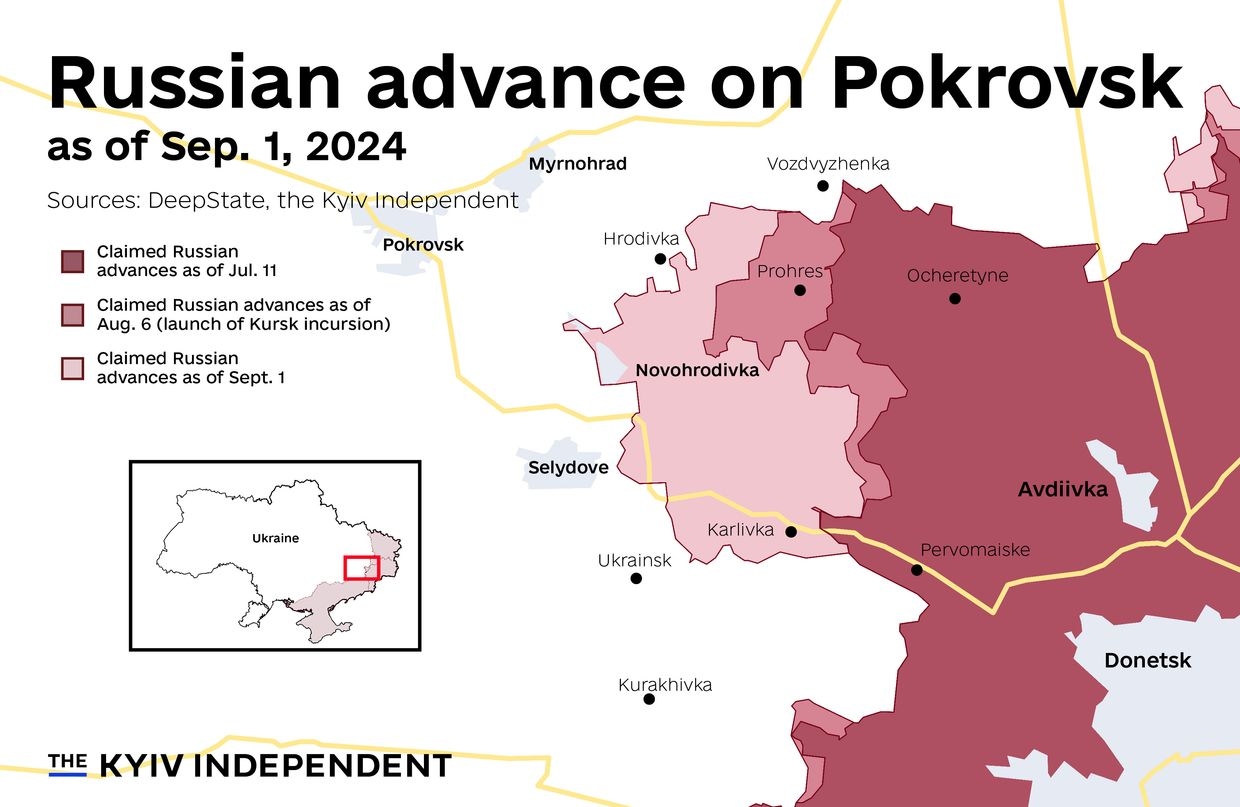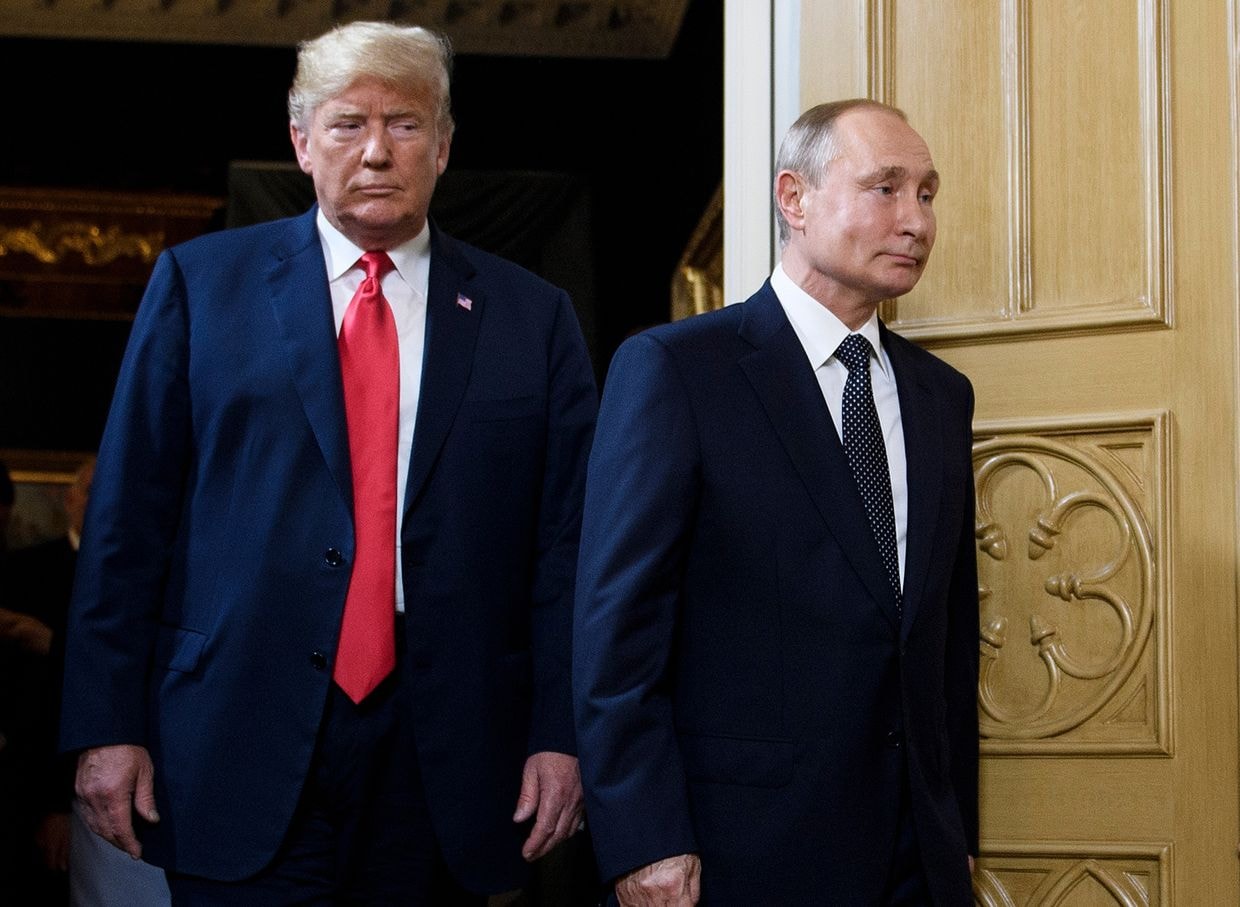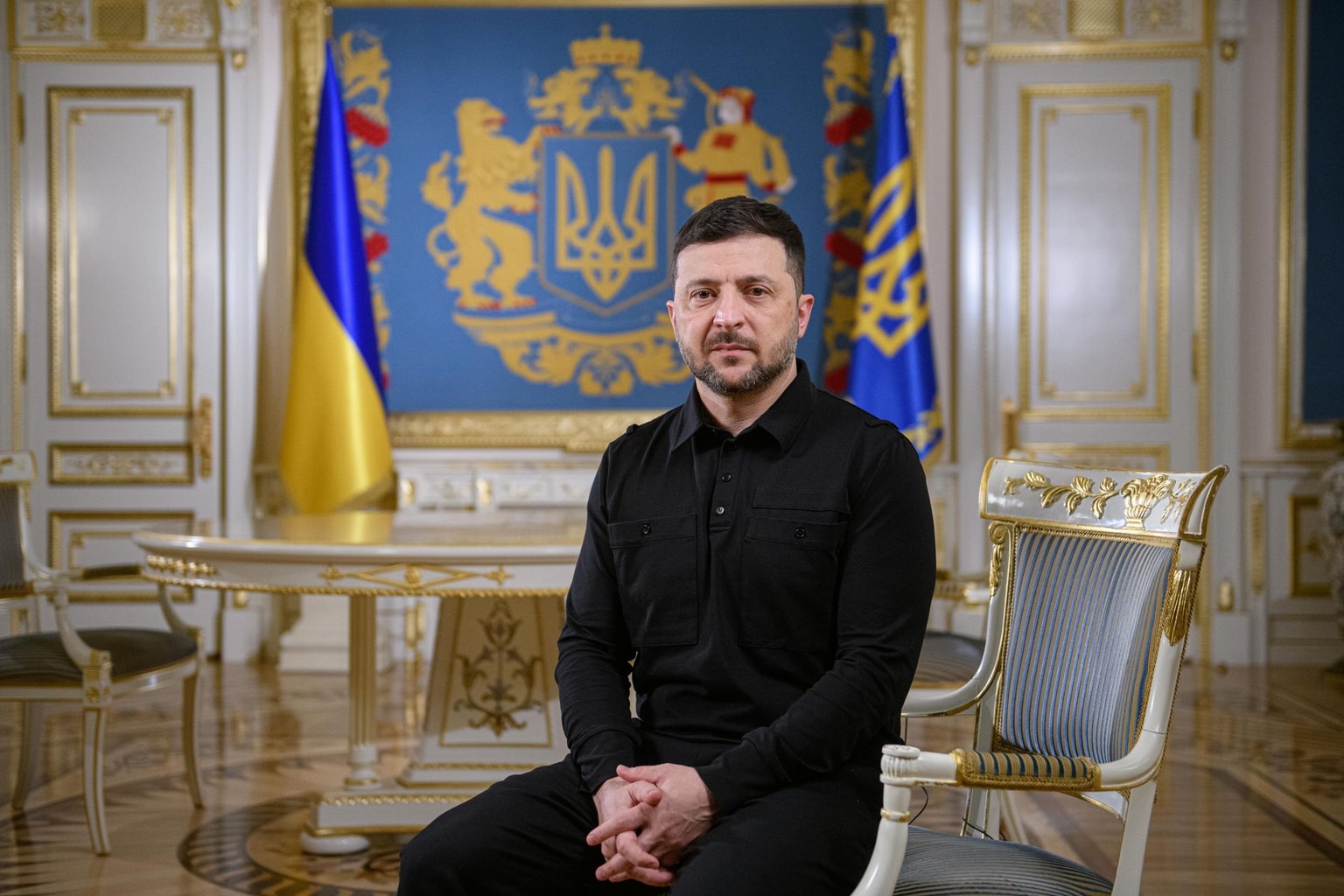
Undistracted by Kursk offensive, Russia cuts deeper toward Pokrovsk in Donetsk Oblast
All the embarrassment of having Russian territories invaded and occupied wasn't enough to keep Moscow's eyes off the prize of taking all of Ukrainian Donbas.
Ukrainian servicemen of the 43rd Artillery Brigade fire self-propelled artillery 2S7 Pion toward Russian positions in an undisclosed area in the Pokrovsk district, Donetsk Oblast, Ukraine, on Aug. 8, 2024, amid the Russian invasion of Ukraine. (Roman Pilipey / AFP via Getty Images)
As the world watched Ukraine’s stunning cross-border offensive into Kursk Oblast, celebrating an unexpected blow to Moscow, Russian forces advanced with alarming speed in Ukraine’s east.
One month later, new front lines in the Russian border region formed in the wake of the Kursk incursion have begun to stabilize, but in Donetsk Oblast, Russia has continued to advance on the key city of Pokrovsk.
Speaking remotely at a major forum of Ukraine’s leadership on Aug. 27, Oleksandr Syrskyi, Commander-in-Chief of Ukraine’s Armed Forces, made a surprisingly candid admission.
Forcing Russia to peel away its forces from offensives along the front line in eastern Ukraine was indeed one of the main goals of Ukraine’s surprise offensive in Kursk, Syrskyi said.
But where it mattered the most, the plan failed.
“Of course, the enemy understands this (the intent to draw forces away from Pokrovsk), Syrskyi said, “which is why they continue to concentrate the most forces in the Pokrovsk direction, where their most combat-effective units are located.”

While claiming that over 30,000 Russian soldiers had been transferred to the Kursk Oblast theater, Syrskyi openly acknowledged that Moscow made sure not to take the foot off the pedal around Pokrovsk.
“The enemy is trying to divert forces from other sectors, but in the Pokrovsk sector, is doing the opposite and only increasing its forces,” he said.
As of the first days of September, Russian forces are now, according to open-source mapping of the front line, less than eight kilometers away from the edge of Pokrovsk and less than four kilometers from the southern outskirts of Pokrovsk’s sister city, Myrnohrad.
Over the past weeks, thousands of people have been evacuated from the two cities and other surrounding settlements in face of the imminent wave of the Russian offensive.
Now, with Moscow riding out the embarrassment of losing territory in Kursk and doubling down in Donbas, whether or not Ukraine can stop hemorrhaging its own territory and stabilize its defensive posture looks to prove decisive for the development of the war as a whole over winter.
Losing control
The approach of Russian forces to Pokrovsk began after the fall of the city of Avdiivka, about 40 kilometers to the southeast, in February 2024, after a brutally intense battle that lasted four months, with heavy casualties on both sides.
Despite claims by Ukraine’s military leadership that the front had stabilized along a prepared line of defense in the open fields behind Avdiivka, Russian forces continued to take Ukrainian positions at a slow but steady rate.
The situation turned notably for the worse in April, when a botched rotation of parts of two Ukrainian mechanized brigades was exploited by Russian forces near the small town of Ocheretyne.
Catching the rotating Ukrainian units unprepared to defend, Russian forces took the town, including the first line of prepared fortifications that Ukraine had built in the area, and promptly began expanding the salient both in depth and width.
While initial signs pointed to Russia intending to cut off the T0504 highway between Pokrovsk and Kostiantynivka, the offensive instead continued to follow the curve of the railway line towards Pokrovsk itself.
In another moment of poor coordination between Ukrainian brigades, Russian forces made another breakthrough in July, taking the settlement of Prohres in a reported near-encirclement of Ukrainian forces.
Outflanked to the north by the rapid Russian advance and to the south by a secondary push on the key village of Karlivka, Ukrainian forces in the neighboring sector were forced to retreat behind the Vovcha River and soon withdrew further west, despite the river once being touted as a useful natural defensive barrier.

By the time the Kursk incursion had begun, the situation was out of control, despite official reports continuing to describe it as “difficult but stable.”
Lacking in manpower and ammunition, and retreating too quickly to consolidate along a prepared line of defense, Ukrainian units — both front-line infantry and supporting drone, tank, and artillery units — struggled to operate and coordinate effectively.
Over the next few weeks, as the world watched Ukrainian troops tear down Russian flags in Kursk Oblast, the tricolor was raised in one ruined Ukrainian settlement after another near Donetsk.
In a damning example of how bad the situation was, Russian troops overran the small city of Novohrodivka — the substantial built-up area of which should have offered decent conditions to mount a solid defense — in a matter of days.
The reason for the defense of the area spiraling out of control is impossible to reduce to one single factor, though clear patterns also do emerge, said Emil Kastehelmi, an analyst at the Finland-based Black Bird Group, which has provided detailed coverage of the war from a range of open sources.
Well-known as being consistent problems plaguing the Ukrainian military, the lack of manpower, ammunition, and poorly-prepared fortified lines of defense have placed a heavy burden on Ukrainian units in the area.
When, after taking losses, these exhausted brigades are forced to rotate out of their sector, these moments create perfect conditions for Russian forces to surge forward, argued Kastehelmi.
“These rotations have been the Achilles heel of Ukraine; losing a certain area because of rotation wouldn't be the first time that something like that has happened,” he said.
“In the end, it's mostly the fault of the higher command that these areas are not being prioritized, and that the defenders there haven't been given the tools to actually stop the Russian advance.”
Distraction or exacerbation
Given the already very difficult situation near Pokrovsk at the outset of the Kursk operation, many observers were quick to ascribe the diversion of forces away from Donetsk Oblast as one of the obvious strategic goals of the incursion.
However, according to Kastehelmi, this initial logic, if truly part of the calculus, was flawed from the start.
“I wouldn't have really thought that that would have been one of the Ukrainian objectives,” he said, “because from a doctrinal point of view, it would have been extremely surprising if the Russians would have pulled forces from one of the most important directions where they already had some success over summer.”
Nonetheless, less than half an hour after Syrskyi said that the plan to redirect Russian forces from Pokrovsk failed, President Volodymyr Zelensky made the opposite claim in his own press conference.
“Was the advance on Pokrovsk ongoing before the Kursk operation?” Zelensky said in a heated parry to a question from the Kyiv Independent about how the cross-border incursion could be used in negotiations if the defense of Donetsk Oblast was so unstable.
“Were they advancing slower or faster before? I think faster. Are these things connected? They are, but not in the way you might think.”

Calculations based on open-source mapping of front-line movements show that in comparison to the weeks before the Kursk incursion began on Aug. 6, the advance of Russian forces in the Pokrovsk area has in fact only sped up.
“It's clear that during the Kursk operation, the pace of the offensive for the Russians has been accelerating,” said Kastehelmi.
“At the moment, we see daily gains for the Russians, which are not just one treeline here or there, but more like a village a day.”
Though it is unclear what information Zelensky based his assertion on, the comment raised questions about the understanding of the situation on the ground among the country’s top leadership.
Due to the very different nature of the battles near Pokrovsk compared to Kursk Oblast, drawing serious conclusions about the causal relationship between developments is difficult.
But ultimately, said Kastehelmi, the argument that the ammunition and combat-effective forces used in Russia could have helped prop up the defense of Donbas is hard to ignore.
“Of course, sometimes in war you have to take risks,” he said, “but it comes to the question of prioritizing the available resources.”
“Pokrovsk is a really important direction, one that should be defended. And it's been shown that the Ukrainians are able to stop the Russians, if they have the right manpower and resources.”
The next moves
As Russian forces approach the outskirts of Pokrovsk and Myrnohrad, questions arise as to what the final battle for Pokrovsk will look like.
The agglomeration of larger cities, themselves defended on the outskirts by some prepared defensive lines, will undoubtedly prove a major challenge for Russian forces, themselves tired out after months of endless assaults.
Although open-source mapping shows that Ukraine is understood to have dug some fortified positions outside cities like Pokrovsk and Myrnohrad, the poor performance of fortifications in the area so far shows that they are not a guarantee of a successful defense on their own.
“As a general rule, fortifications are just something magical that stops the enemy,” said Kastehelmi, “you need to have artillery, reconnaissance capabilities to know what kind of threats you are against, there need to be anti-tank capabilities to stop the mechanized attacks."
“And most importantly, there needs to be enough manpower and reserves; you need the ability to put new people in the trenches if the previous defenders are dead or wounded.”

If the price is deemed too high, Moscow could choose to delay a frontal assault on the city and instead sweep southward.
In the wide open fields of southern Donetsk Oblast, Ukrainian units have put up a solid defense over two years, beating back regular large Russian offensives and giving up ground only at a high price.
But with successful gains near Pokrovsk and Russian forces entering the village of Ukrainsk further south, large pockets of Ukrainian-held territory, criss-crossed by rivers, could come under threat of encirclement.
“There's no major encirclement at the moment, there's a threat slowly developing,” said Kastehelmi.
“The Russians seem to acknowledge that they could widen their flanks and widen at the salient pretty significantly by pressing a bit more south.”
Note from the author:
Hi, this is Francis Farrell, the author of this article. Last month, let's be honest, was quite the whirlwind, but as the dust settles, it is clear that as much as the Kursk offensive shook things up in a big way, Russia's basic plan of grinding forward in eastern Ukraine at whatever cost has not changed... yet. The Kyiv Independent will head down there soon, and will bring you back the freshest updates from the ground. Please consider supporting our reporting.













